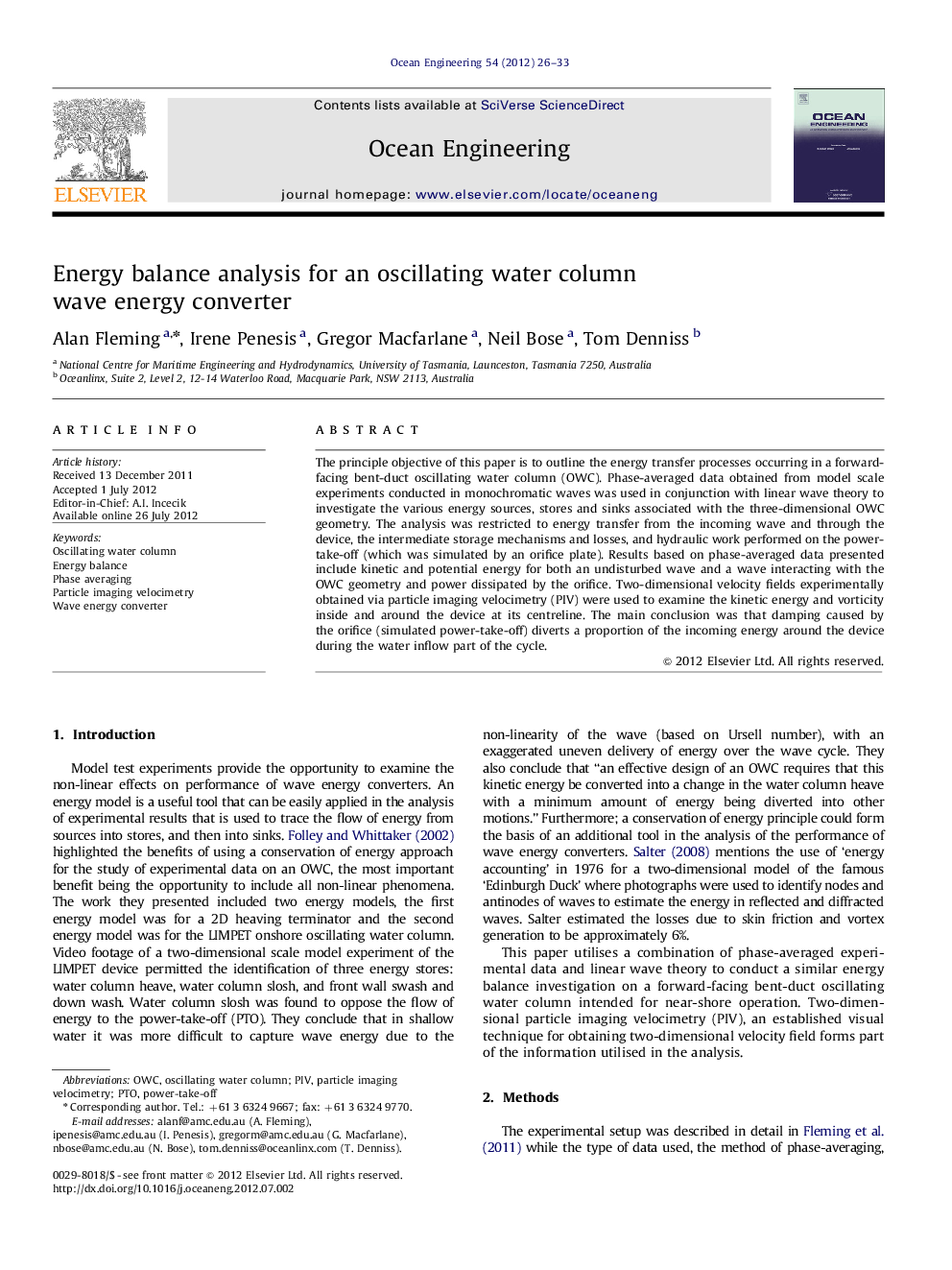| کد مقاله | کد نشریه | سال انتشار | مقاله انگلیسی | نسخه تمام متن |
|---|---|---|---|---|
| 1726172 | 1520736 | 2012 | 8 صفحه PDF | دانلود رایگان |

The principle objective of this paper is to outline the energy transfer processes occurring in a forward-facing bent-duct oscillating water column (OWC). Phase-averaged data obtained from model scale experiments conducted in monochromatic waves was used in conjunction with linear wave theory to investigate the various energy sources, stores and sinks associated with the three-dimensional OWC geometry. The analysis was restricted to energy transfer from the incoming wave and through the device, the intermediate storage mechanisms and losses, and hydraulic work performed on the power-take-off (which was simulated by an orifice plate). Results based on phase-averaged data presented include kinetic and potential energy for both an undisturbed wave and a wave interacting with the OWC geometry and power dissipated by the orifice. Two-dimensional velocity fields experimentally obtained via particle imaging velocimetry (PIV) were used to examine the kinetic energy and vorticity inside and around the device at its centreline. The main conclusion was that damping caused by the orifice (simulated power-take-off) diverts a proportion of the incoming energy around the device during the water inflow part of the cycle.
► We investigated the energy transfer process in an oscillating water column.
► We concluded that phase averaged results are useful for investigating energy transfer.
► We found that power dissipated by the orifice was greater at inflow compared to outflow.
Journal: Ocean Engineering - Volume 54, 1 November 2012, Pages 26–33